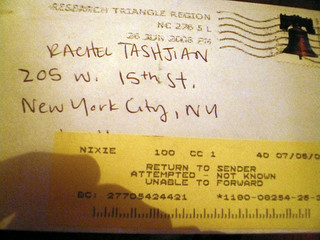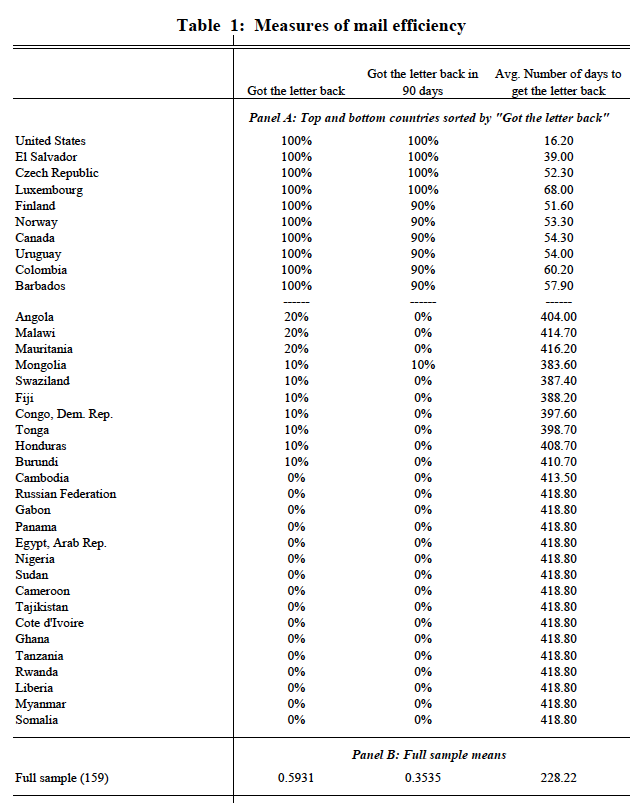Return to Sender: What Can Postal Behavior Tell Us About a Nation?
I am not sure this is as meaningful as the authors think, but still it is an interesting experiment. From a new working paper called “Letter Grading Government Efficiency” by Alberto Chong, Rafael La Porta, Florencio Lopez-de-Silanes, and Andrei Shleifer:
We mailed letters to non-existent business addresses in 159 countries (10 per country), and measured whether they come back to the return address in the U.S. and how long it takes. About 60% of the letters were returned, taking over 6 months, on average. The results provide new objective indicators of government efficiency across countries, based on a simple and universal service, and allow us to shed light on its determinants. The evidence suggests that both technology and management quality influence the quality of government.
I am happy to read that final sentence but surprised it needed to be said. This paper may tickle your memory with thoughts of Stanley Milgram‘s “small-world experiment” (better known as “six degrees of separation“) and Judith Kleinfeld‘s reassessment of that experiment as told in Duncan Watts‘s excellent book Six Degrees.
Anyway, here is a key table from the “Return to Sender” paper:



Comments